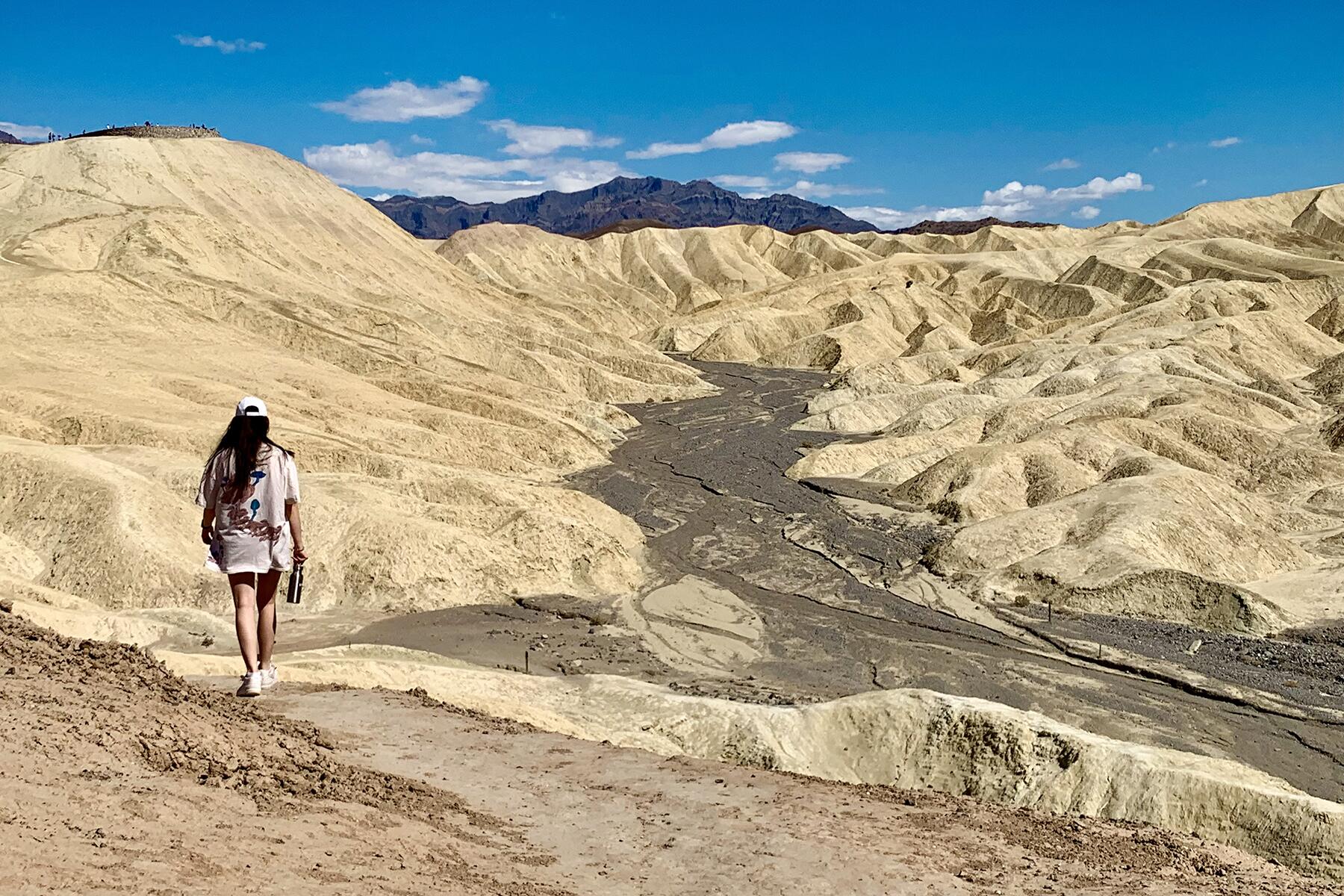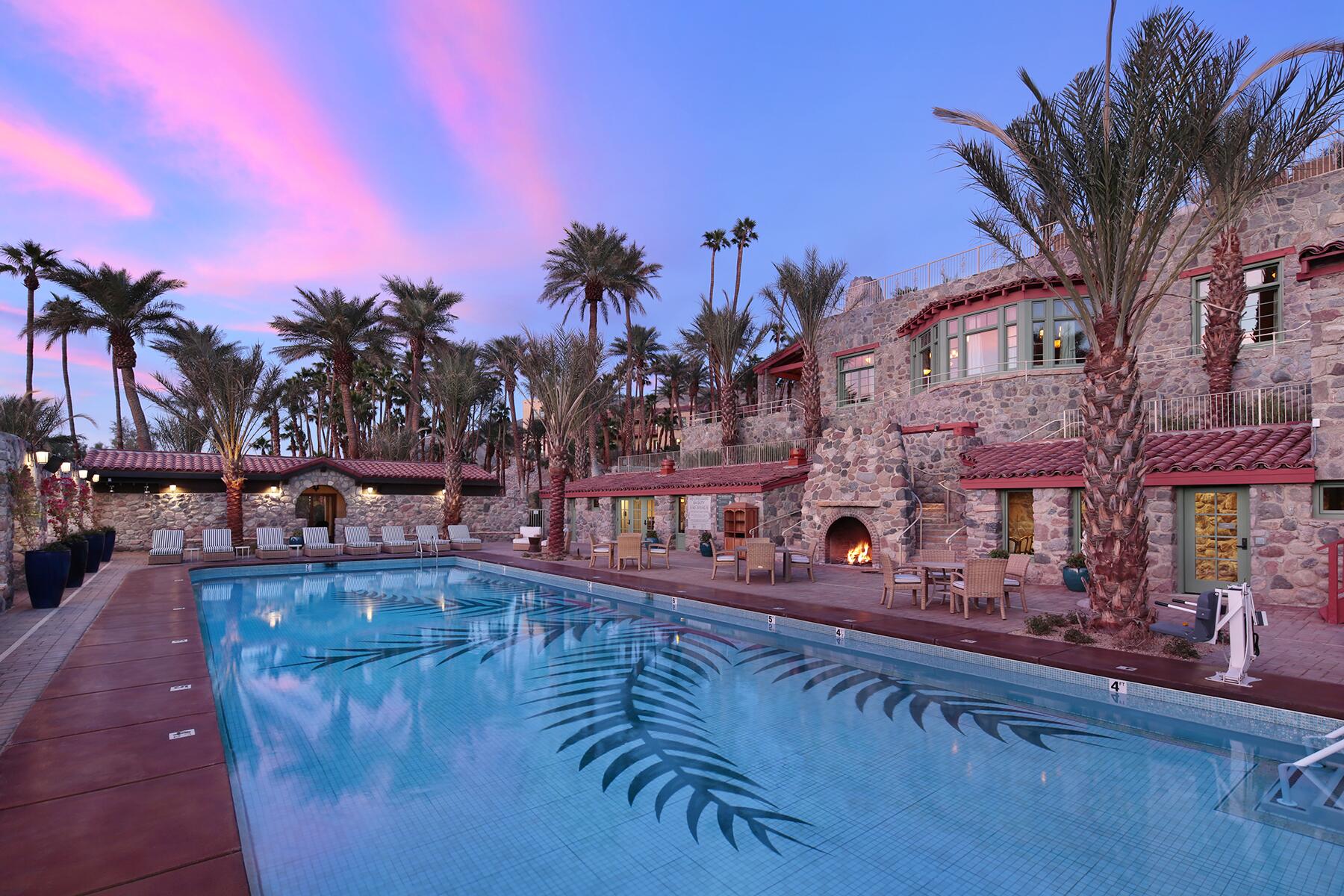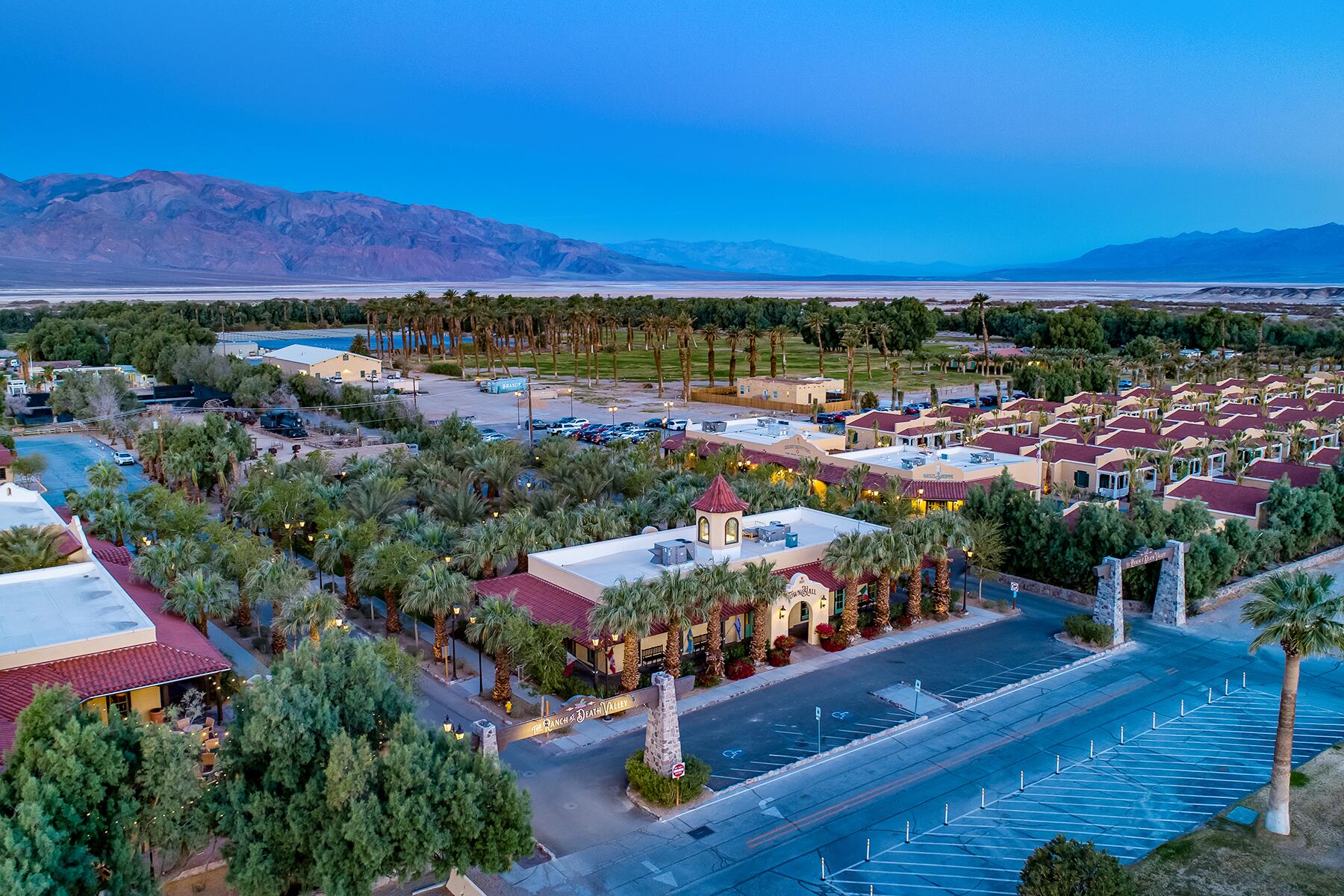How to spend your summer in Death Valley.
When the mercury hits 120 degrees Fahrenheit in July, the ground temperature in Death Valley National Park can soar to 200. The shimmering salt flat that dominates Badwater Basin, the lowest elevation spot in North America, is hot enough to actually fry an egg.
Fortunately, on the spring day, our multi-gen family hiked onto that expanse of white table salt, the air temperature was only in the 80s. The wind, however, was an element we weren’t expecting—gusts buffeted my elderly mother, who feared her hearing aids would fly out of her ears and be swallowed up by the desert.
Like many travelers, we’d come to the California park, a two-hour drive west of Las Vegas, because of its extremes and the doom implied by its name. We wanted to trek up sand dunes, walk 282 feet below sea level, and see if it lived up to the hype of its place names (Desolation Canyon, Dante’s View, Devil’s Golf Course).
We were also hungry for some heat and Death Valley didn’t disappoint: the day we arrived it hit 104 degrees, a new record high for that date. Basically, a place that’s so scorching its visitor center has to put up a sign that says, “Please don’t cook eggs on the sidewalk—they’re hard to clean up,” is a destination that captures the imagination.
But explore the hottest spot on Earth in the middle of summer? Hard pass.
Summer Is One of Death Valley’s Busiest Seasons
However, despite California having experienced two record-breaking heat summers in a row, in 2020 and 2021, a surprising number of people do just that. Before the pandemic, summer was the second busiest time in the park, after March and April.
Recommended Fodor’s Video
“International visitors want to have the heat experience. If you’re coming to the American west to experience a desert, the most extreme part is Death Valley,” explains park spokesperson Abby Wines. Thanks to its geography and location—it’s a narrow valley walled by steep mountains that trap the hot air like a convection oven—Death Valley is the hottest, lowest and driest spot on the continent.
“That is part of what draws people,” she says.
Death Valley’s heat record, 134 degrees Fahrenheit (which is also the world’s hottest recorded temperature), was documented back in 1913. There are one or two heat-related fatalities every year, but more people die from car crashes in the park, says Wines.
She doesn’t think Death Valley deserves the name it earned during the 1849 gold rush when prospectors passed through on their way north and west (only one man died during the journey). Evidently, as one of the parties was leaving the region, a woman turned around and said, “Goodbye, Death Valley.” The name stuck.
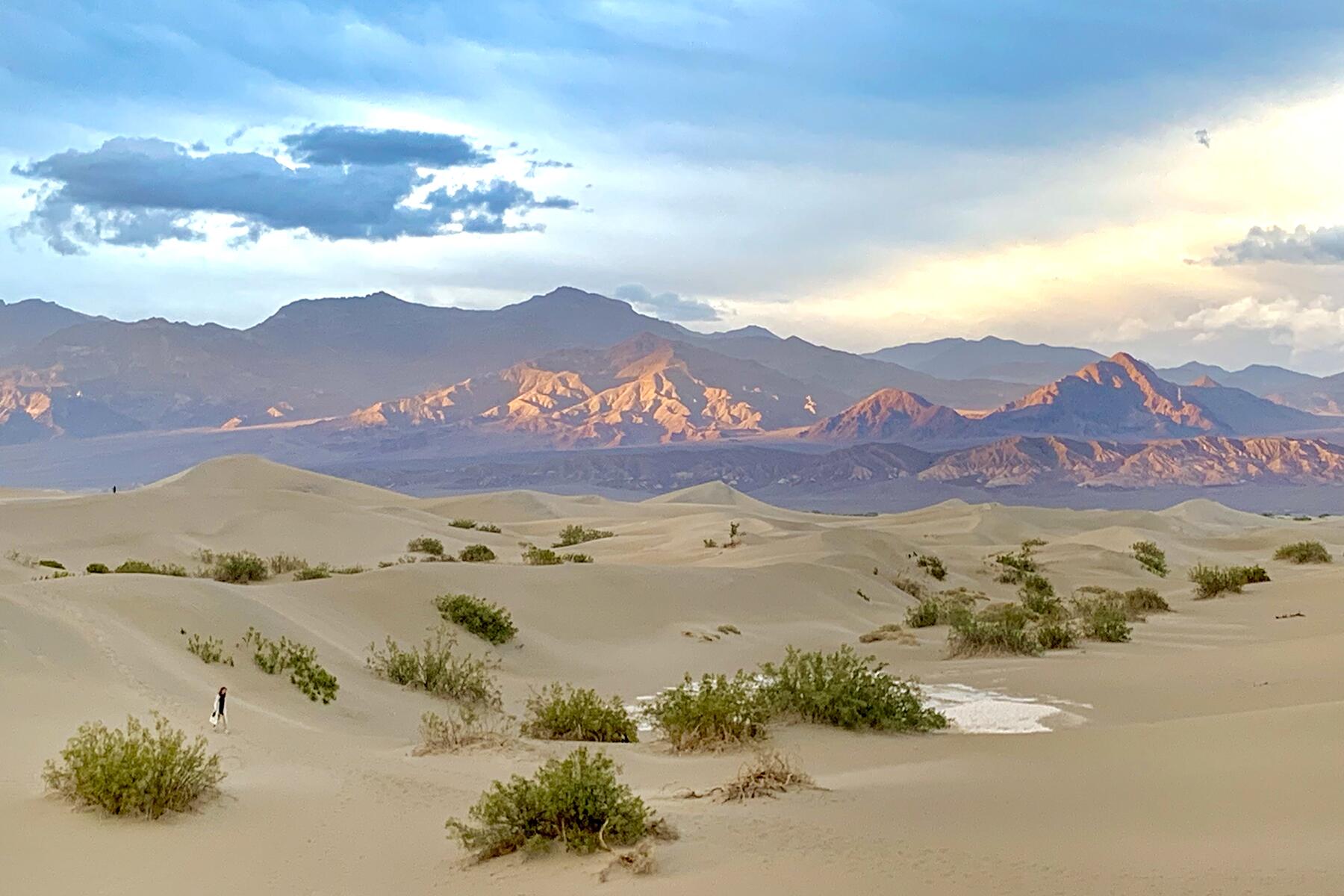
Chasing Extremes… And Bragging Rights
In July, when the average high climbs to 116, people come to have their picture taken next to the thermometer outside the Furnace Creek Visitor Center, so bragging rights are definitely a factor. In 2020, American golfer Dan Markham played 18 holes at Furnace Creek Golf Course on an August day when it hit 126.
“I just want to check this off my bucket list,” Markham said in a video he posted on YouTube.
Richard Farabee has been offering guided Jeep tours in Death Valley since 2009 and he still scratches his head over summer visitors, most of whom are from Europe and travel in July and August because that’s when they have time off.
“That kind of heat almost feels like a weight on you…it slows you down,” says Farabee. “They talk about the asphalt getting up to 170, 180. Ladies get out of their cars wearing high heels and the asphalt melts the heel right off the shoe.”
In May, Farabee had a group of Swiss tourists that brought cookie dough and a baking sheet with them to see if they could make cookies on the Jeep’s dashboard. It took two hours, but the ginger snaps were delicious.
“People who want to come here, the heat is not going to keep them away, so they clearly are a more adventurous group,” says Farabee. “They’re not easily discouraged.”
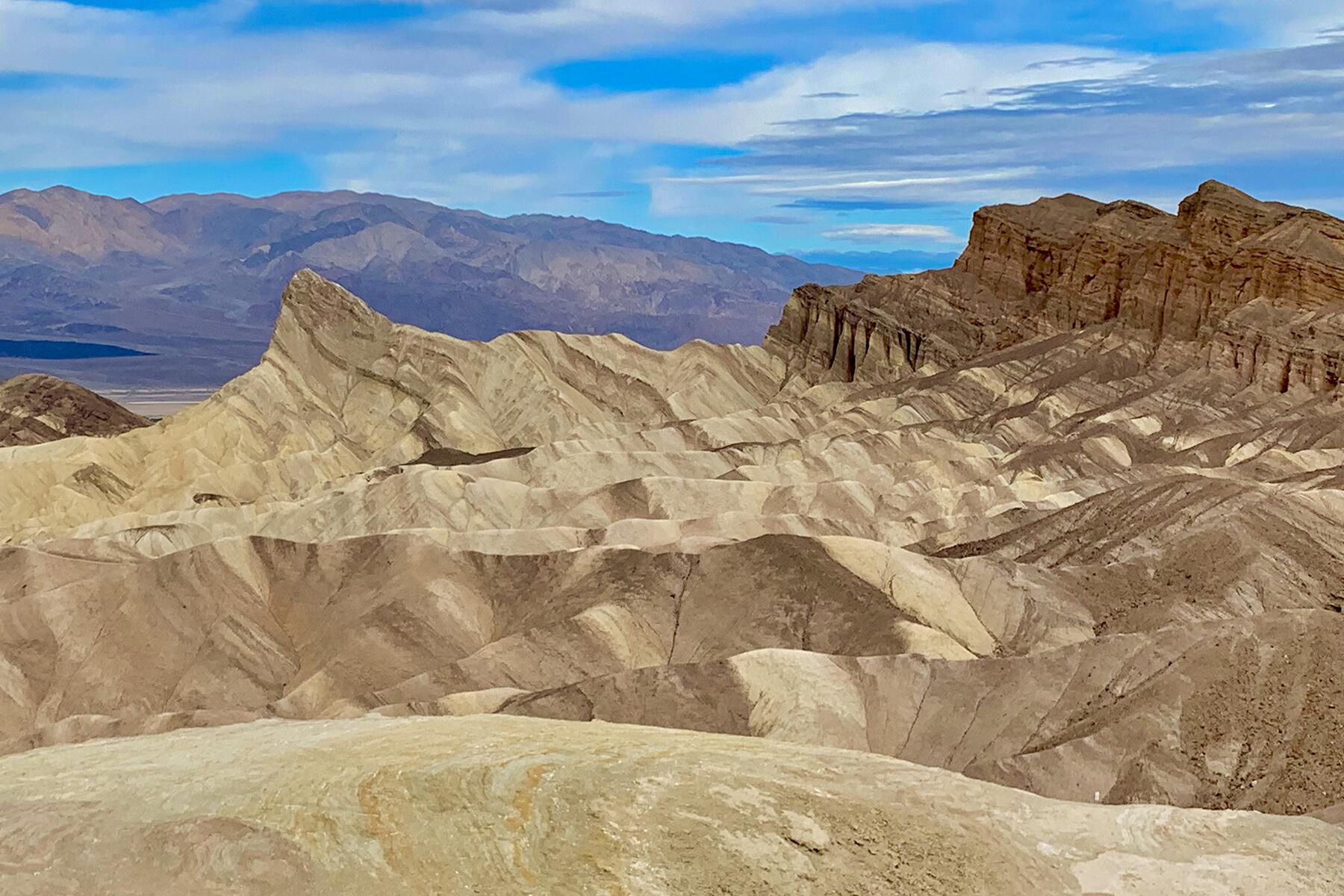
A Valley of Surprises
Marika Mousseau, 32, fits into that category. A few years back she camped in Death Valley in June when the mercury was hitting 110 every day.
“I remember freaking out because of how hot it was,” says Mousseau, a Canadian who was road tripping with some friends between Santa Barbara and Las Vegas. They went sightseeing by day in an air-conditioned car stocked with cases of water. What stood out for Mousseau, though, were the nights.
“Once the night settled and the wind came down, the star gazing that you can do was amazing,” she recalls. “We just slept outside, or in the tent with no fly.”
Those surprises, combined with the park’s variety of landscapes—sand dunes, colorful badlands, a volcanic crater, and a saline creek teeming with pupfish—are what endear Death Valley to visitors. If you can just manage the heat and plan your activities accordingly, you’ll love it.
Respect the Heat and Stay Hydrated
The National Park Service recommends hiking before 10 a.m. in the summer and aiming for higher altitudes where it’s cooler. Walks at lower elevations such as Badwater Basin should only last a few minutes, says Wines.
This heat avoidance message is echoed by The Oasis at Death Valley, a resort that operates two properties in Furnace Creek year-round.
“The three things we tell everyone are: hat, sunglasses, water. When you’re out there you’re not going to [realize you’re perspiring]. It hits your skin and it dries off,” says general manager John Kukreja, who recommends guests drink a gallon of water a day. “It’s weather and you respect it wherever you are.”
The Ranch at Death Valley, where we stayed, has a spring-fed swimming pool that maintains a refreshing temperature of 87 degrees all summer, plus a saloon and ice cream parlor where parents and kids, respectively, can cool down. Tellingly, most summer guests only stop over one night.
Climate Change in Death Valley
Though new heat records continue to be set in Death Valley every year, park staff haven’t yet discussed how climate change might impact visitation, says Wines.
The National Park Service is aware that rising temperatures may influence precipitation, and that the combination of extreme heat and drought could affect the park’s plant and animal species.
“The park reached 130 degrees the last two years, which is already way too hot by many people’s standards,” says Wines.
But armed with cool cars, air-conditioned rooms, and cold water, humans aren’t yet deterred. Kukreja, for one, isn’t worried extreme heat will scare tourists away.
“Humans are very adaptable,” he says. “They will still find pleasure and they will still find fun [in Death Valley], and that will continue.”
After all, as insane as it seems, there’s always a golfer wanting to swing in Death Valley’s summertime oven, or road trippers driving through with a carton of eggs.




